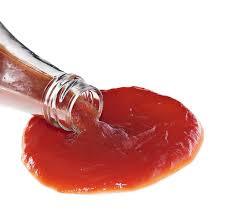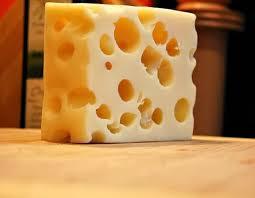Fact File 1 !!!
Welcome to the amazing world of science. In this note you can enjoy reading the mysterious of science as well as mind blowing facts. You can drop your comments and more interesting facts in the comments section.
1. Why does tomato sauce get stuck in a glass bottle ?

Tomato sauce is a highly viscous paste made from tomatoes, spices and various other additives. Hence, the sauce can only move if it is shaken or if sufficient force applied. Everyone knows from pouring water out of a bottle has to be replaced by air bubbling through the water from the open end of the bottle. Tomato sauce however, is too viscous to allow air bubbles to pass through it easily. This is why a vacuum forms in the bottom of the bottle when the sauce moves away from it. But there are several ways of getting it out. A plastic bottle of sauce are flexible and can be squeezed to elimante the vacuum. Another method helps _ simply insert a drinking straw deep into the bottle so that air can pass through the tomato sauce to the bottom.
2. Why doesn't food stick to non - stick pans ?

Whether or not food sticks to a pan is a question of chemistry. As a rule, the molecules of a uncoated metal frying pan and the molecules of frying food are strongly attracted to each other. This creates bonds bonds between the metal surface and the carbohydrates or proteins in the food, and this chemical reaction is seen when the food sticks to pan and burns. Frying butter or oil can reduce sticking because fats provide a temporary intermediate layer. The permenant solution for these is to use a pan with a permenant surface such as Teflon or a similar synthetic material. The molecules in the food cannot stick to these synthetic layers. The non - stick coating is held firmly to the pan because the coating"s molecules cling to the countless imperfections on the rough metal surface.
3. What gives sparkling water its sparkle ?

The addition of carbon dioxide is what gives mineral water a refreshing sparkle. This requires very high pressure and relatively cool conditions, for only then will the gaseous carbon dioxide dissolve _ forming carbonic acid _ and be evenly distributed in the water. In an unopened bottle the pressure is four to five times higher than it is in the ambient air. When a bottle is opened the pressure is reduced and some carbon dioxide escapes. This is visible in the form of bubbles that come up fizzing up suddenly. In the case of naturally sparkling mineral water the water absorbs carbon dioxide as it seeps through volcanic rock.
4. How do the holes get into cheese ?

Swiss cheese, properly known as Emmentaler, gets its hole-y appearance and distinctive flavor thanks to the bacteria that turns milk into cheese. All cheeses contain bacteria (they’re responsible for producing lactic acid) which help them develop into a final edible product, yet not all those bacteria are the same. To make Swiss cheese, the cultures of the bacteria S. Thermophilus, Lactobacillus and P. Shermani are mixed with cow’s milk. The bacteria helps produce curds, which are pressed and soaked in brine inside of cheese molds. The cheese is then stored at 72 to 80 degrees Fahrenheit and left to ripen. It’s at this point when the bacteria really does its work. While it’s working, it releases lactic acid and one of those bacteria, a gassy one, consumes it. That bacteria, more specifically P. Shermani, releases carbon dioxide when it consumes the lactic acid and forms bubbles. The bubbles don’t just disappear, they form little air pockets, resulting in the holes of the Swiss cheese.
5. Will the Universe eventually become uninhabitable and come to an end ?

How long the universe remains habitable naturally depends on what happens to it in the future. Should it come about that it eventually shrinks, ending in a Big Crunch, this would mean an end to all forms of life. But even in a cosmos that goes on expanding for all eternity _ which is what seems likely if recent findings showing that expansion is accelerating prove to be correct - it seems certain that a time will come when life ceases to exist. Life processes could slow down to counter this, but nevertheless, at some point reaches a limit beyond which it cannot go.
Easy Math Editor
This discussion board is a place to discuss our Daily Challenges and the math and science related to those challenges. Explanations are more than just a solution — they should explain the steps and thinking strategies that you used to obtain the solution. Comments should further the discussion of math and science.
When posting on Brilliant:
*italics*or_italics_**bold**or__bold__paragraph 1
paragraph 2
[example link](https://brilliant.org)> This is a quote# I indented these lines # 4 spaces, and now they show # up as a code block. print "hello world"\(...\)or\[...\]to ensure proper formatting.2 \times 32^{34}a_{i-1}\frac{2}{3}\sqrt{2}\sum_{i=1}^3\sin \theta\boxed{123}Comments
THIS … THIS IS … PARADISE!
Very Interesting. Solving some of the smaller and larger mysteries of the universe.